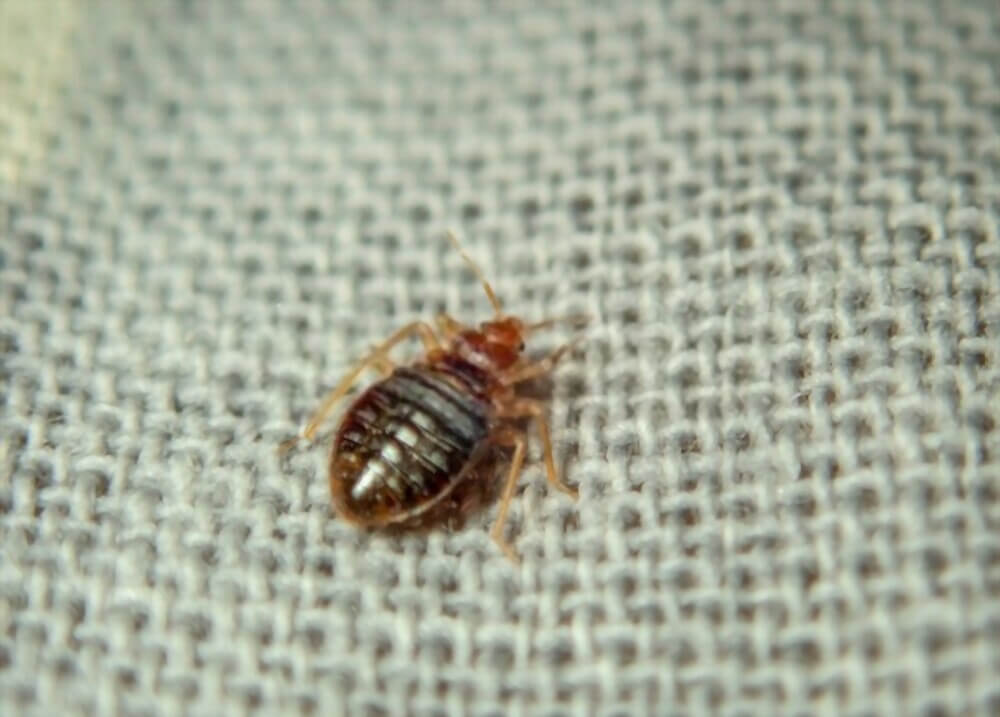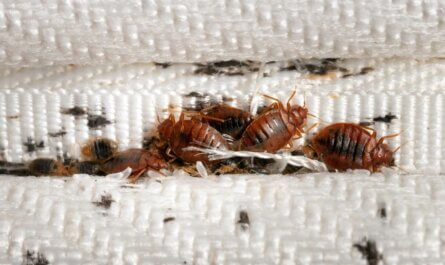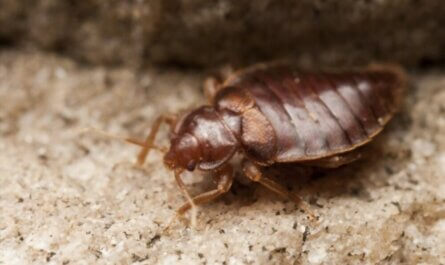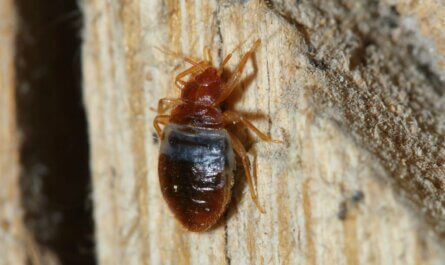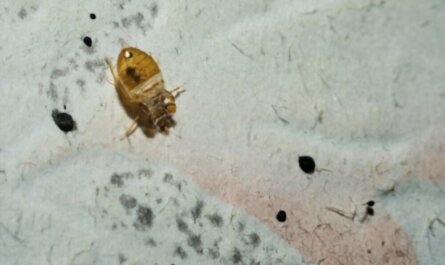Bed bugs can quickly turn your sweet dreams into a nightmare. These tiny critters are notorious for their resilience and rapid reproduction, making them difficult to eradicate once they infest.
This blog post will guide you on spotting the early signs of bed bug stains on sheets, empowering you to respond promptly before an infestation spirals out of control. Time to reclaim your peaceful slumber!
Key Takeaways
- Bed bug bites appear as red, itchy bumps on the skin, usually found in straight lines or clusters.
- Bloodstains on sheets can indicate a bed bug infestation, often found near mattress edges or corners.
- A musty smell around the mattress and small brown specks (bed bug feces) are also signs of an infestation.
- Thoroughly inspecting bedding and other areas of the home is crucial to detecting bed bugs early.
Early Signs of Bed Bugs Infestation
You may notice bug bites on your skin or bloodstains on your sheets.
Bug Bites on Your Skin
Bed bug bites appear as red, itchy bumps on your skin. Usually, these annoying pests bite at night while you sleep. Their favorite spots to feast include areas exposed during sleep such as arms and shoulders.
You might notice a clear pattern of multiple bites in a straight line or clustered together in small area. The itching can lead to excessive scratching and risk of secondary infection.
Bed bugs don’t transmit diseases but constantly waking up with fresh bites is no fun for anyone!
Bloodstains on Your Sheets
Bloodstains on your sheets can be a telltale sign of a bed bug infestation. These small pests feed on human blood, leaving behind blood spots on your bedding. These stains may appear as red or brown marks and are often found near the edges or corners of your mattress.
If you notice these bloodstains, it’s important to take immediate action to address the bed bug problem. Laundering your sheets on high heat and using stain removers can help remove the stains,
But it’s crucial to also address the underlying infestation by thoroughly inspecting your mattress and bedding for other signs of bed bugs.
Musty Smell Around Your Mattress
If you notice a musty smell around your mattress, it could be a sign of a bed bug infestation. Bed bugs release pheromones that can create an unpleasant odor in the area where they are hiding.
This musty smell is often described as sweet or moldy. If you suspect bed bugs, it’s important to take immediate action and inspect your mattress and bedding for any other signs of infestation.
Finding Brown Specks
Inspecting your bedding for small brown specks is a crucial step in detecting a bed bug infestation. These specks are actually bed bug feces and can often be found along the seams of your mattress, on your sheets, or even on nearby furniture.
The presence of these brown specks is a strong indicator that you may have bed bugs in your home. If you notice them, it’s important to take immediate action to prevent further infestation and ensure the health and safety of yourself and others.
Finding a Bed Bug or a Casing
If you suspect a bed bug infestation, it’s important to know how to identify these pests and their casings. Look closely at your mattress seams, bedding folds, and furniture crevices for any signs of bed bugs or their discarded exoskeletons.
These tiny insects are about the size of an apple seed and can easily hide in cracks and crevices. If you spot a live bug or a casing that resembles a translucent shell, it’s time to take action to eliminate the infestation before it spreads further throughout your home.
What Bed Bug Stains Look Like
Bed bug stains can appear in the form of fecal stains or blood stains on your sheets.
Fecal Stains
Bed bug infestations can leave behind telltale signs, including fecal stains. These dark brown or black spots are often found on sheets, mattresses, and other bedding materials. Fecal stains are a result of bed bugs digesting blood meals and then depositing their waste.
If you notice these stains, it’s important to take immediate action to address the infestation and prevent further spread of these pests.
Blood Stains
Blood stains can be one of the early signs that you have a bed bug infestation. These stains occur when the bugs bite and feed on your blood while you sleep. They leave behind small red or brown marks on your sheets, pillowcases, or mattress covers.
If you notice these blood stains, it’s important to take immediate action to eliminate the bed bugs from your home.
How to Remove Bed Bug Stains
To remove bed bug stains, launder your sheets on high heat and treat the stains with stain removers.
Laundering Sheets on High Heat
To effectively remove bed bug stains from your sheets, it is recommended to launder them on high heat. Bed bugs and their eggs can’t survive extreme temperatures, so washing your sheets in hot water and then drying them on high heat will help kill any remaining pests or eggs.
Make sure to follow the care instructions for your specific bedding to prevent damage. By laundering your sheets on high heat, you can ensure that any bed bug stains are thoroughly removed and prevent a reinfestation in your home.
Treating Stains with Stain Removers
To treat bed bug stains on your sheets, you can use stain removers. Stain removers contain powerful enzymes and chemicals that break down the stains and help remove them from the fabric.
Follow the instructions on the stain remover product for best results. Apply a small amount of the stain remover directly onto the stained area and gently rub it in with a cloth or sponge.
Allow it to sit for a few minutes before laundering your sheets as usual. Remember to check if the stain is completely gone before drying your sheets, as heat can cause any remaining stain to set permanently.
Detecting Bed Bugs Early
Thoroughly inspect your mattress and bedding for any signs of bed bugs.
Thoroughly Inspecting Your Mattress and Bedding
Inspecting your mattress and bedding is crucial in detecting early signs of a bed bug infestation. Start by carefully examining the seams, tufts, and folds of your mattress. Look for any tiny brown or black spots which could indicate bed bug fecal stains.
Pay attention to bloodstains as well, as these can be an indication that you have been bitten by bed bugs during the night. Don’t forget to check your sheets, pillowcases, and blankets for any signs of bugs or their casings.
By thoroughly inspecting your bedding regularly, you can catch a potential infestation before it becomes a bigger problem.
Checking Other Areas of Your Home
To effectively detect bed bugs and prevent a larger infestation, it is important to check other areas of your home. Start by inspecting your furniture, especially any upholstered pieces or mattresses in other rooms.
Look for brown stains, tiny eggs, or live bugs crawling around. Don’t forget to examine cracks and crevices on walls, baseboards, and electrical outlets as well. Bed bugs can hide in these spaces during the day and come out at night to feed.
Additionally, be sure to check any luggage or bags that have recently been used for travel as bed bugs can hitch a ride into your home this way. Taking the time to thoroughly inspect all areas of your home will help you catch an infestation early and prevent further spread throughout your living space.
It’s also crucial to remember that bed bugs aren’t limited to bedrooms – they can infest other areas of your home too! One common hiding place is behind picture frames or wall decor, so it’s important not to overlook these spots when checking for signs of an infestation.
Upholstered furniture such as couches and chairs should also be closely examined as bed bugs are known to crawl into the cushions or seams.
Another area often overlooked is electrical outlets; remove the cover plates and use a flashlight to search for any signs of bed bug activity inside.
Conclusion
In conclusion, early bed bug stains on sheets are a telltale sign of a potential infestation. By recognizing these stains and taking immediate action, you can prevent further spread and protect your home from these pesky pests.
Don’t ignore the signs – act quickly to eradicate bed bugs and maintain a clean, comfortable living environment.

